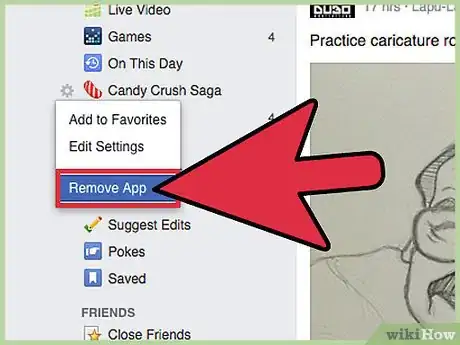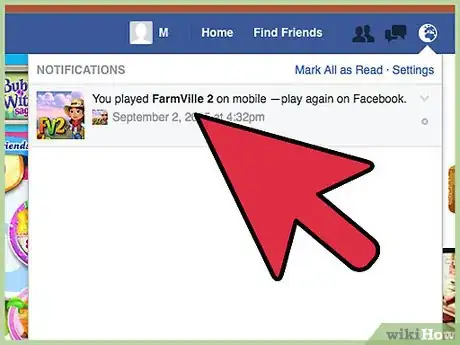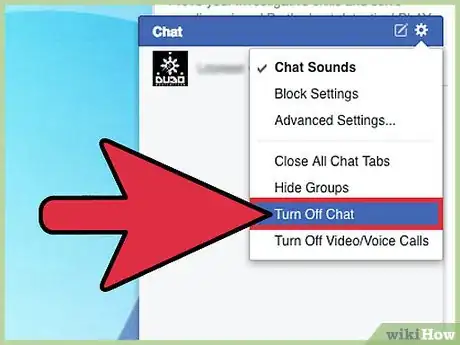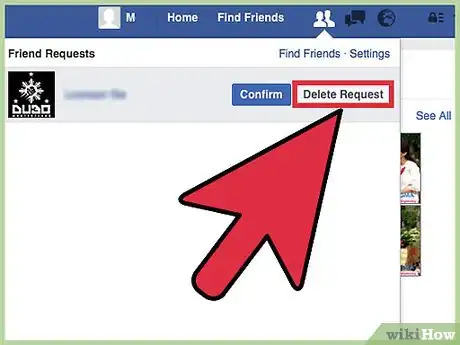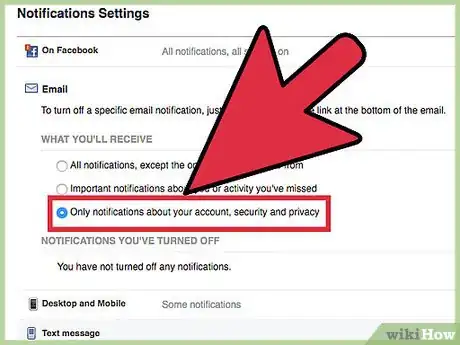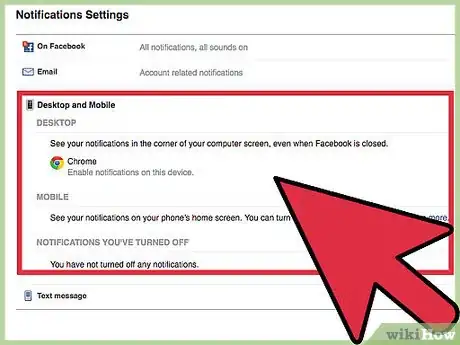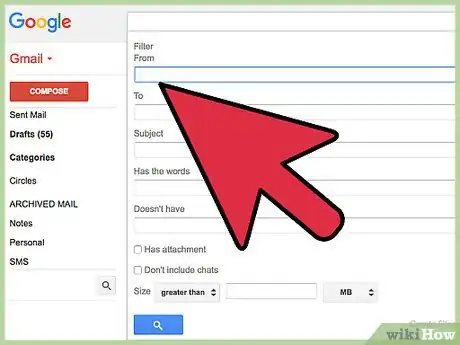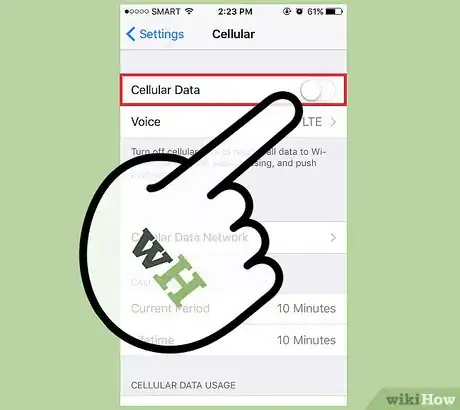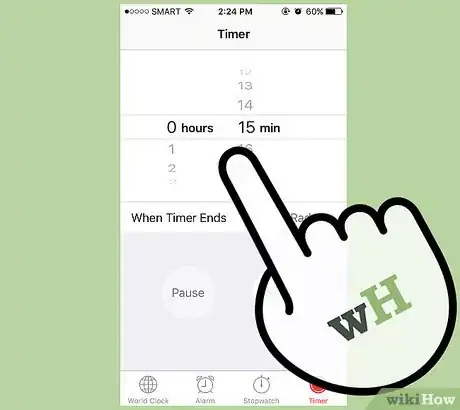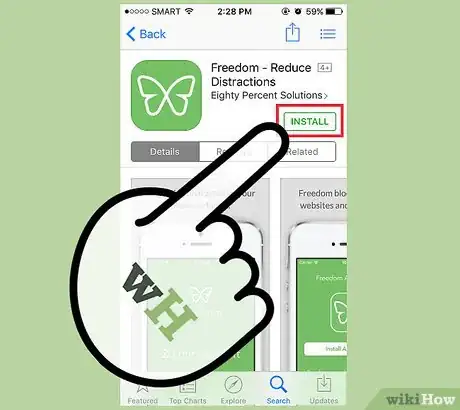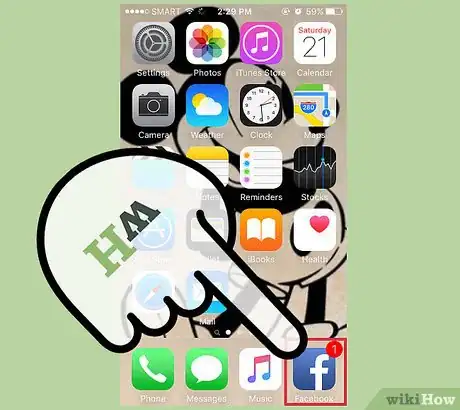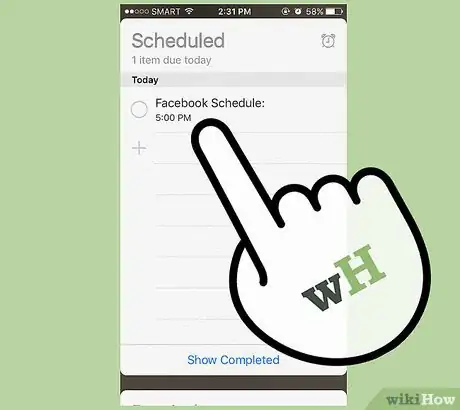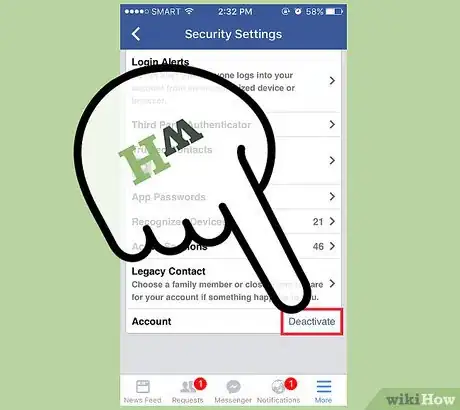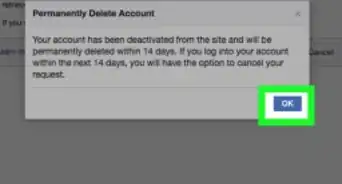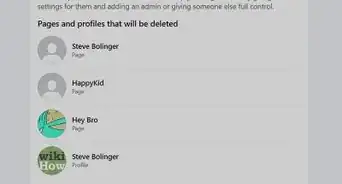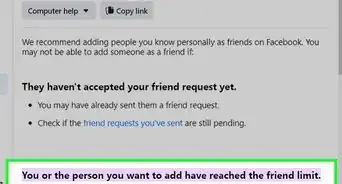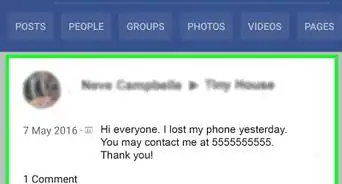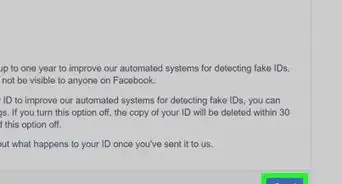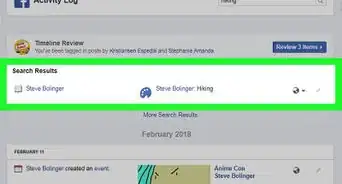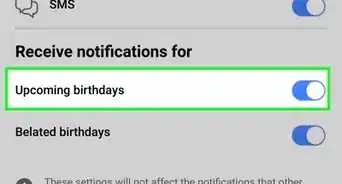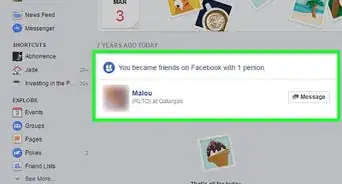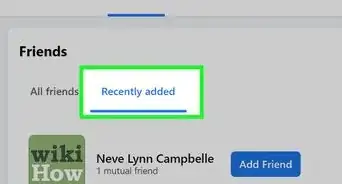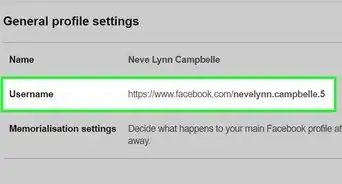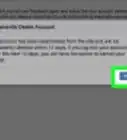This article was co-authored by wikiHow Staff. Our trained team of editors and researchers validate articles for accuracy and comprehensiveness. wikiHow's Content Management Team carefully monitors the work from our editorial staff to ensure that each article is backed by trusted research and meets our high quality standards.
wikiHow marks an article as reader-approved once it receives enough positive feedback. In this case, 88% of readers who voted found the article helpful, earning it our reader-approved status.
This article has been viewed 396,727 times.
Learn more...
Facebook can be an excellent method to keep in touch with friends. However, Facebook seems to be set up to try to draw you in and get you to waste time there. If you just want to use it to stay in contact, renew connections with old friends, and do some networking, there are several methods to avoid wasting time.
Steps
Simplifying Your Facebook Experience
-
1Block your newsfeed. If you want to be able to log in and post a quick status update, or simply to check your notifications without being sucked in, you can completely block your newsfeed. The free Google Chrome add-on “Newsfeed Eradicator” replaces your Facebook newsfeed with an inspiring quote. [1]
- Search for this add-on, then simply click "Download," and follow the instructions to install.
-
2Avoid games and third-party applications (apps). Playing games, decorating your profile picture two or three times a day, and rating your friends will suck up your time before you know it. By avoiding the use of games and other apps, you will use your Facebook time more effectively.[2]Advertisement
-
3Block game requests. To further reduce the temptation of Facebook games, you can block game requests from your friends. When you receive a request, simply click the “x” to the right of your notification box, to turn off notifications from that game. You will no longer receive any requests or notifications for the game in question.[3]
-
4Turn off chatting features. You're about to log out of Facebook, then a good pal of yours sends you an IM. You'll stay on to chat for a while, and before you know it, there goes another hour. To avoid this, click on the “Chat” button in the bottom right corner and choose "Go Offline."[4]
- You may also want to either delete the Facebook Messenger app, or simply mute Messenger notifications.
-
5Ignore many requests at once. On your "confirm requests" page, you don't have to click "ignore" on every request individually. Scan the page, see if there's anything of value (e.g. any old friends you're happy to hear from) and approve them. Then click "Ignore all" near the top right, and you’re done.
Limiting Notifications
-
1Edit the notifications you see on Facebook. Those little red numbers at the top of your profile can be terribly addicting. Limit your urge to click by limiting the notifications you get from Facebook. Click "Settings" (top right) and choose Account settings. Then, Notifications. Switch some of the options off. Some good choices include “Birthdays,” “On This Day,” and “Close Friends Activity.”[5]
-
2Edit the notifications that get sent to your desktop or phone. Even if you’re not logged in to Facebook, you might receive a pop-up on your desktop, or an audio notification on your phone. If this pulls you in to Facebook more than you’d like, go to “Account settings,” then “Notifications," and edit your settings for desktop and mobile.[6]
-
3Limit Facebook emails. Just as you can edit other forms of notification, you can revise your email settings through Facebook (visit "Account settings," then "Notifications"). Another easy option is to use an email filter. If you use Gmail, for example, simply create a filter and in the "From" field, enter "@facebook.com." Then, select "Skip the Inbox (Archive it)".[7]
-
4Turn off cellular data for the Facebook app. If you enjoy getting mobile notifications at some times, but not at others, you can simply turn off your Facebook app’s access to cellular data as a kind of temporary “do not disturb” option. If Facebook cannot access data, it can’t update, and therefore cannot send push notifications.
- Simply visit the "Settings" area on your phone and look for a tab marked "Cellular" or "Cellular Data." Here you will be able to switch off cellular data for individual apps, or for phone you phone altogether.
-
5Delete the app from your phone altogether. A more drastic way to limit your Facebook is to delete the app from your phone altogether. You will still be able to access Facebook from your computer (or technically, even through an internet browser on your phone), but you will be far less tempted (or able) to check your Facebook every 15 minutes.
Breaking the Habit
-
1Use a timer. It is easy to lose track of time when you’re surfing Facebook. Help keep time present for you by setting a timer. You can use a timer on your phone, a kitchen timer, or any number of online timers or apps. Simply decide how long you’d like to spend on Facebook, set the timer, and when it rings, swiftly log out.[8]
-
2Block yourself with an app. Many apps exist that allow you to block social media or even internet use altogether. Some of these apps are available for purchase (such as Freedom or Anti-Social), and others can be downloaded for free (Self-control, which is Mac only, and LeechBlock). The basic premise is that these apps block you from visiting sites like Facebook according to a schedule you design.[9]
-
3Modify your routine. Instead of habitually going on Facebook whenever you sit down at your computer, use Facebook as a treat or incentive. This is a good idea if you find yourself ending up on Facebook when you're supposed to be working.
- For example, you can decide, "I'll allow myself to go on for 15 minutes after I finish this assignment."
- Alternatively: "I'll look at those new pictures after I finish this chore."
-
4Create a Facebook schedule. Decide how many times per day you will allow yourself to visit Facebook. Then, set a schedule for yourself, and stick to it. For instance, you may decide to visit Facebook once in the morning, and then once again after dinner. It will require a great deal of self-discipline, but if you make this your habit, eventually it will stick.
-
5Deactivate your account. If all else fails and you feel that you need a break, you can always deactivate your Facebook account. It is only temporary; you can make your Facebook page live again whenever you are ready.[10]
References
- ↑ http://www.jeffbullas.com/2014/12/04/how-to-stop-wasting-time-on-facebook/
- ↑ http://www.quertime.com/article/how-to-effectively-stop-wasting-time-on-facebook/
- ↑ https://www.facebook.com/HowToBlockGameRequests/
- ↑ http://www.quertime.com/article/how-to-effectively-stop-wasting-time-on-facebook/
- ↑ http://www.quertime.com/article/how-to-effectively-stop-wasting-time-on-facebook/
- ↑ http://www.jeffbullas.com/2014/12/04/how-to-stop-wasting-time-on-facebook/
- ↑ http://www.quertime.com/article/how-to-effectively-stop-wasting-time-on-facebook/
- ↑ http://www.quertime.com/article/how-to-effectively-stop-wasting-time-on-facebook/
- ↑ http://www.jeffbullas.com/2014/12/04/how-to-stop-wasting-time-on-facebook/

